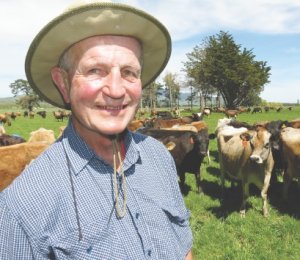Holmes told 35 farmers at a recent DairyNZ OAD discussion group in southern Wairarapa that though many twice-a-day farmers (TAD) believe OAD is impossible and ridiculous, others see outstanding results by OAD farmers and are having second thoughts.
Holmes says about half of the farmers at the event were TAD farmers. “It’s a slow wearing-away process, but I think more and more people are starting to hear sensible results from OAD people and think it’s possible and are looking at it as a serious option.”
Holmes says a survey he recently did pointed to some advantages of OAD: fewer lame cows, below-average SCC and less stress on people. Anecdotal evidence suggests staff turnover on OAD farms is lower than on TAD farms because of the different workload.
“OAD is a much healthier paradigm because the intensive farming systems are terribly hard on people. They are either in the milking pit or something else like feeding out and it’s a challenge for people. Some OAD farmers have suggested that it may be easier to recruit for their
operations but there is no evidence to support that,” he says.
Holmes also pointed to the potential lower capital cost of OAD. He says TAD farmers will often opt for a rotary shed in order to manage a larger herd, whereas a OAD farmer can manage the same number of cows with a herringbone which at about $500,000 is about half the cost.
As pressure increases on land use, prompting more dairy farming on rolling hill country, OAD becomes a genuine option. Cows may have to walk further to the milking shed, but they only have to do it once a day.
A major issue for OAD farmers is getting cows bred specifically for this purpose. An attempt has been made to do this, but Professor Holmes says this is hard given the fact that there’s a relatively small number of OAD herds in the country. He says some of the bigger OAD farmers have been doing work on this, but progress is slow.
While many OAD farmers have low SCCs, Holmes says mastitis is still a challenge. He says in both OAD and TAD, cows are exposed to mastitis by virtue of the milking system.
There is some gain to OAD farmers but it’s not all plain sailing. “In the case of OAD you don’t see the teat for 24 hours from when you take the cups off so if there’s anything wrong there’s a longer time for it to flare up into something, so you have to be vigilant.”
















